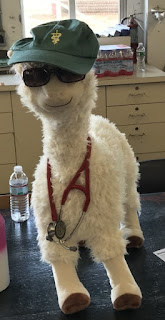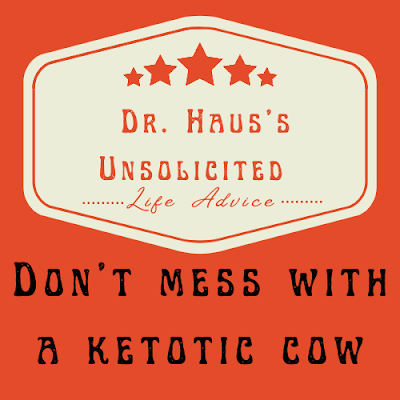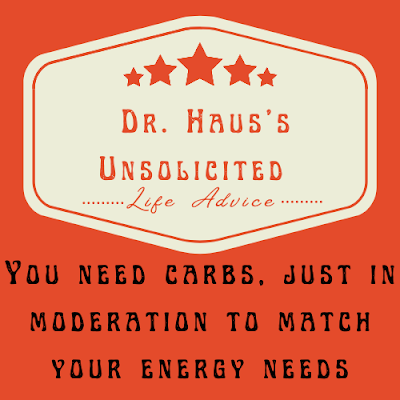Click For Explanation of Case Flow
Click for Test Case Tuesday: Vince Vomits Valiantly
Click for Thoughtful Thursday: Vince Vomits Valiantly
Quick Review
Diagnosis:
🦴Myasthenia Gravis🦴
Pathophysiological Point:
Myasthenia
gravis is a disease where the acetylcholine receptors between nerves
and muscles are destroyed or blocked. Simply, nerves cannot conduct
their signals to muscles. Muscles are unable to contract (move) without
the signals from the nerves.
Questions, Answers, and Further Information:
Level 1 Questions, Answers, and Further Information:
- Vince's communication between his nerves and muscles is disrupted, how does that affect the muscles of his body? Why?
If Vince's nerves cannot communicate with his muscles, his muscles will not be able to move. The nerves tell the muscles to move and without this signaling he will not be able to contract his muscles easily leading to difficulty moving. - What part of Vince's history and physical exam findings
support the diagnosis of a disease that affects communication between
the nerves and muscles of his body?
The history and physical exam findings that support his diagnosis are the generalized weakness and muscle loss. These findings support the fact that Vince's nerves are not able to send their normal signals to the muscles. - Challenge
question, why does Vince have megaesophagus? How does this cause
regurgitation after meals? (HINT: Think about Vince's disease and how
it would affect the muscles of the esophagus)
The esophagus is a muscle much like the other muscles of the body. In order for food and fluid to get to the stomach, the esophagus must be able to contract. With Vince's disease, he cannot use his esophageal muscles to push the food/fluid down to his stomach so the food and fluid accumulates in the esophagus causing it to expand and stretch causing megaesophagus. As this food/fluid builds up in the esophagus it will comes out the mouth because the muscle contractions are not there to get the food and fluid to his stomach efficiently.Helpful Links:
- VCA (dogs): https://vcahospitals.com/know-your-pet/megaesophagus
- Mayo Clinic (humans): https://www.mayoclinic.org/diseases-conditions/myasthenia-gravis/symptoms-causes/syc-20352036
- Cornell Vet School: https://www.vet.cornell.edu/departments/riney-canine-health-center/canine-health-information/myasthenia-gravis
- VCA (dogs): https://vcahospitals.com/know-your-pet/megaesophagus
Level 2 Questions, Answers, and Further Information:
- How does myasthenia gravis cause disease (i.e., megaesophagus) in a
patient? Be sure to mention the “normal” esophageal physiology in your
answer and explain physiologically where the miscommunication is
occurring. (HINT: Review normal neuromuscular junction physiology)
Myasthenia gravis destroys/blocks the acetylcholine receptors on the muscle cells. Neurons release acetylcholine into the synaptic cleft at the neuromuscular junctions. This allows the muscle cell to begin to undergo the process of depolarization which will eventually lead to the muscle contracting. The esophagus is a muscle that must contract to move food/fluid towards the stomach. With the acetylcholine receptors of the esophageal muscles destroyed/blocked, the esophagus cannot move the food/fluid and the esophagus will expand to accommodate all the stuck food/fluid material. - How does megaesophagus lead to Vince’s major clinical sign
(regurgitation)? (HINT: Think about what keeps us from floating away
into space)
Since Vince cannot contract his esophagus, the food/fluid will sit in the esophagus unable to move aborally. This leads to the material falling back out the mouth especially when Vince puts his head down as gravity will cause the food/fluid to fall out of the mouth. - Challenge question, explain why Vince has pneumonia. Be sure to explain
how his underlying disease predisposed him to this condition. Be sure
to mention the anatomy involved. (HINT: Think about what structure
sits right next to the esophagus)
Vince's pneumonia is likely due to his regurgitation from the megaesophagus. Each time Vince regurgitates his food, he risks some of the food/fluid accidentally falling into the trachea which sits next to the esophagus. When food/fluid enters the esophagus there is a risk that the material gets into the deeper lung tissues leading to pneumonia (inflammation of the alveoli).
Helpful Links:
- Merck Vet Manual: https://www.merckvetmanual.com/nervous-system/congenital-and-inherited-anomalies-of-the-nervous-system/neuromuscular-disorders-in-animals
- Cornell Vet School: https://www.vet.cornell.edu/departments/riney-canine-health-center/canine-health-information/myasthenia-gravis
- Merck Vet Megaesophagus: https://www.merckvetmanual.com/digestive-system/diseases-of-the-esophagus-in-small-animals/dilatation-of-the-esophagus-in-small-animals
- Merck Vet Manual: https://www.merckvetmanual.com/nervous-system/congenital-and-inherited-anomalies-of-the-nervous-system/neuromuscular-disorders-in-animals
Level 3 Questions, Answers, and Further Information:
- Describe the treatment plan you would recommend Vince and why you
are recommending each part of your treatment plan. Please answer this
question as if you are speaking to a professional colleague. .
Vince's treatment plan will depend on the etiology of his disease. If Vince's disease is due to a thymoma the thymoma needs to be surgically removed. Otherwise, anti-acetylcholinesterase medications can be used to treat these patients. Vince will also need to be treated for his pneumonia with antibiotics and other supportive care as needed. - Describe
your recommended treatment plan and why you are recommending each part
of your treatment plan. Please answer this question as if you are
explaining it to a client/patient without a scientific background.
Vince has a disease that causes his nerves and muscles to not communicate correctly. We will be starting Vince on a medication that will help his nerves and muscle communicate better while also starting him on antibiotics to treat his pneumonia. - Please describe the different ways Vince's owners could help manage his condition with environmental changes.
There are a few ways Vince's owners can help increase Vince's quality of life at home. Firstly, Vince should be fed and watered from dishes that are elevated off the floor (less gravitational effects). The owners can also hold Vince up vertically after meals to help gravity "push" the food/fluid down to his stomach. His owners should also feed him smaller, more nutrient dense meals to decrease his risk for regurgitation.Helpful Links:
- Journal of Internal Veterinary Medicine: https://www.ncbi.nlm.nih.gov/pmc/articles/PMC8478050/
- Journal of Clinical Medicine: https://www.ncbi.nlm.nih.gov/pmc/articles/PMC8196750/
- Journal of Internal Veterinary Medicine: https://www.ncbi.nlm.nih.gov/pmc/articles/PMC8478050/
Day 3 Conclusion
I hope you enjoyed the Vince's case! Don't forget to...
📚 Review material related to the goats' case
🤩 Get excited for upcoming cases








.png)




.png)


